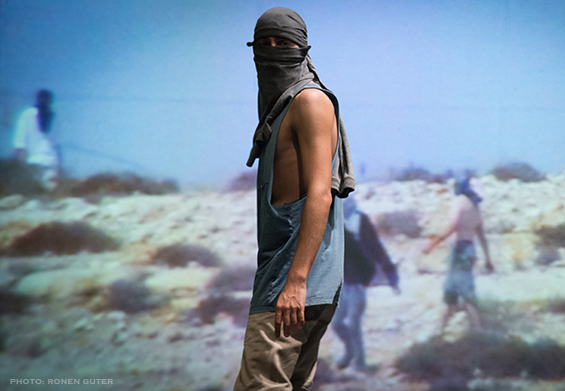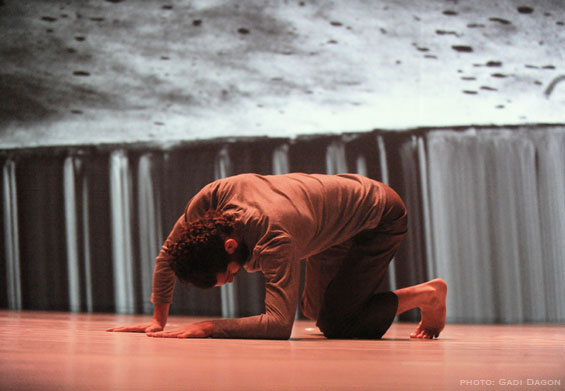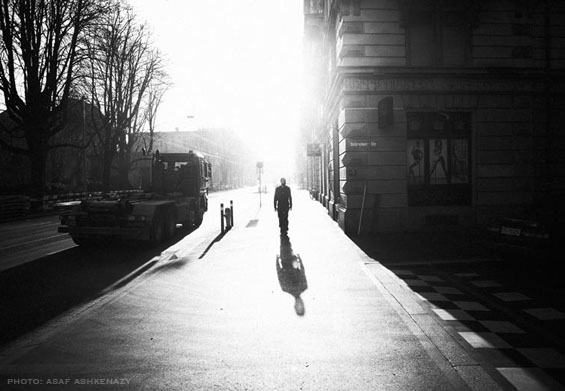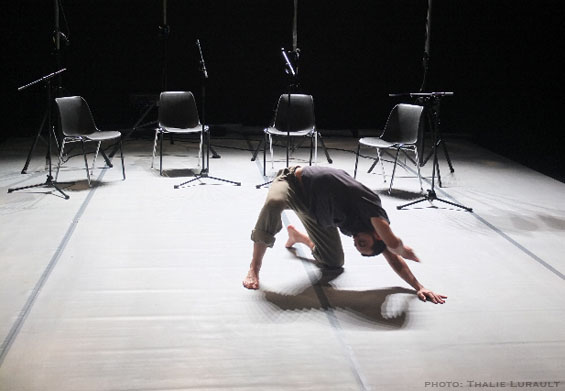On Borders and Bodies
An Interview with Arkadi Zaides
BY EMMALY WIEDERHOLT
Arkadi Zaides is an independent Israeli choreographer. One of the main themes he grapples with in his work is the concept of borders, both literal and metaphorical. He shares how borders have come to be a defining element of his work.
~~
What was the seed that made you interested in investigating the idea of borders? Was there a specific experience, or was it the overall experience of living in the Middle East?
I was not born in Israel; I immigrated to Israel when I was 11 years old. Naturally, border spaces became a point of interest. This notion of borders is very much embodied for me. Originally it was an instinctive embodiment, but it’s become clearer in different contexts, like in my transition as an immigrant. It’s very much present in every aspect of life here. Eventually, I focused my work on the attempt to position myself in relation to the Israeli social-political context. I’ve focused my work on this since 2007 or 2008. Since then, exploring borders is very much present in all my work.
A political border is created by individuals. As it is created, it is generated and initiated; it is built, it is crossed, it is climbed. And each individual has a unique relation to it. A political border not only mirrors a personal border, but also generates it. Interactions between people create borders.
Can you give some concrete examples from your work?
In one project, Land-Research, most of the performers did not meet each other. I created a separation between them to emphasize the separation that happens between borders. The performers in this particular piece were from different ethnicities and social-economic backgrounds. I created a border in the work itself; it consisted of five different solos, and in between each solo there was a projection of images which depicted a barrier of some sort, either a wall or a road or a photo of the West Bank.
In Archive, another work, the idea of borders became more embodied through gesture and voice. We discussed how the body and its physicality can become a border in a place where a border is not clearly defined. A voice can become a marker of an imaginary line through sound, and can be transgressed or trespassed.
I understand you perform in Europe, the U.S. and in the Middle East. Since these are all places that have border issues, how do you perceive the impact of your work changes from place to place?
In all those places, people have different understandings of borders. Therefore, it is not about the difference between the places but the differences between the people in those places. Borders manifest themselves in many ways. It could be a social-economic border, a geographic border or an ethnic border, and all have many layers and are intertwined. So I would not differentiate between the places themselves because each place has individuals who carry different understandings of this concept.
For example, when I was at a conference in Stockholm recently that specifically dealt with borders, there were many of us from the Middle East and others from Stockholm. It was clear these two groups carried a very different understandings of what a border is and how it influences everyday life. For the people from Stockholm, borders are a bit distant and very conceptual. For us from the Middle East, borders are much more tangible and experienced. It brings up places of privilege or under-privilege and places of movement. Who can travel where and who can cross what? Who can enter places and feel comfortable? All these questions are at stake when we’re approaching people with different life stories.
What kinds of reactions do you get about your work depending on who the audience is?
Because I show work that’s very specific in its placement and locality, the difference in response depends on how far or close people to that locality are who see the work. Of course, an Israeli, even if I meet him or her abroad, will have a different response to such propositions than somebody who is from far away.
It’s also a matter of being familiar with a context or situation. Again, the reactions are different as people are different. I cannot say anything more specific than that.
Do you believe dance can change people’s perspectives?
Borders are politically charged spaces, and they are constructed by and for people. Who builds the border and who tries to cross it? We are talking about bodies and different perceptions of bodies and, in that sense, it is very much relevant to address these issues through dance. Physicality is already involved and differs in relation to space.
I believe everything we do is part of our political life, and going to a theater is included in that. Therefore it can have an effect. If one addresses this issue in a complex enough way, I do believe any experience of spectating it can give new understandings. When I invite people to see a show, it’s a tool to address certain social issues in the hope it makes a difference.
What role do you foresee borders will play in your work in the future?
The new work I’m developing now is looking at this concept much closer, especially focusing on the Schengen area in Europe. I do believe borders will continue to resonate in my work. I even look through this lens in my works that are more abstract or less charged from a specific context. In 2013, I created a work one might say was the least political, but actually there was a separation between music and movement. Looking to the future, borders will continue to resonate in different ways, as it has done until now.
~~
To learn more, visit www.arkadizaides.com.




